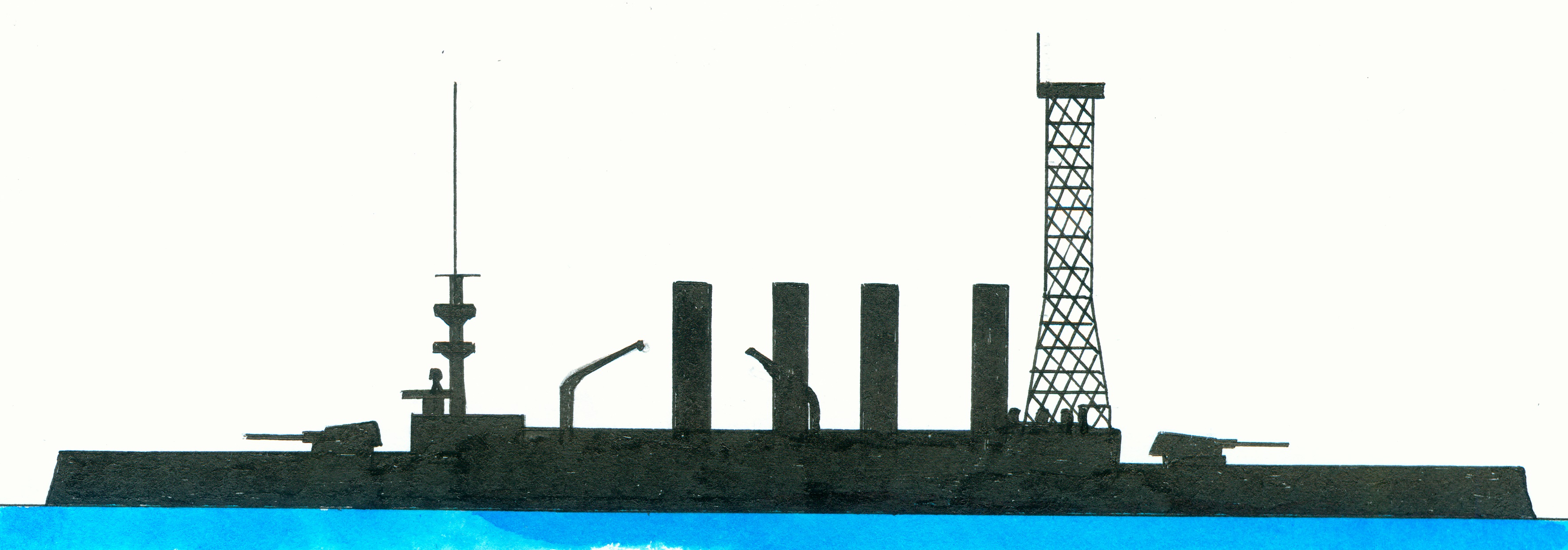USS Brooklyn
USS Pennsylvania
Pennsylvania-class
Tennessee-class
Of the Pennsylvania-class consisting o the Pennsylvania (renamed Pittsburgh), West Virginia (renamed Huntington), California (renamed San Diego), Colorado (renamed Pueblo), Maryland (renamed Frederick) and South Dakota (renamed Huron). Built under the fiscal years 1900-1901. Preceded by the USS Brooklyn (ACR-3) and succeeded by the Tennessee-class. The considered modernisation in 1922-1923 of the Pennsylvania-class is never executed. It included new boilers and engines resulting in an increased speed of 25-27 knots, better protection and the new 3-20,3cm/8”/55 cal gun turrets. Also called Armored Cruiser No. 4. Building ordered on 3 March 1899, awarded on 10 January 1901, laid down by William Cramp&Sons, Philadelphia, Pennsylvania, USA on 7 August 1901, baptized by miss Coral Quay, launched on 22 August 1903, commissioned on 9 March 1905, renamed Pittsburgh on 27 August 1912, fitted out with a landing platform on her aft deck and a tall hook apparatus was she on 18 January 191 used in an experiment in which an aircraft landed on board of her, reserve at Puget Sound 1 July 1911-30 May 1913 and used as naval militia training ship, decommissioned on 10 July 1931, stricken on 26 October 1931 and sold to be broken up to Union Shipbuilding, Baltimore, Maryland, USA on on 21 December 1931. Hull symbols ACR-4 and since 17 July 1920 CA-4. Contracted building price for hull an machinery 3.890.000 US dollars.
Displacement 13.680 (standard)-15.381 (full load) tons and as dimensions 153,6 x 21,2 x 7,95 metres or 504’x 69.6’x 26.1’. The machinery consisted of 2 vertical inverted triple expansion steam engines and 32 Niclausse-boilers supplying 23.000 ihp (design) driving 2 screws allowing a speed of 22-22,44 (trials) knots. Coal bunker capacity 900 (normal)-2.000 (maximum) tons. Her crew numbered 825 men (excluded 64 marines). The armour consisted of a 12m7-15,2cm thick belt, a 3,8cm/1.5” (flat)-10,2cm/4” (slope) deck with the turrets and conning tower protected by respectively 16,5cm/6.5” and 22,9cm/9” thick armour. The original armament consisted of 2x2-20,3cm/8” /40 cal Mark 5 guns, 14-15,2cm/6” /50 cal Mark 6 guns, 18-7,6cm/3” /50 cal quick firing guns, 12-4,7cm/1.9”/3pd quick firing Driggs-Schroeder guns, 2-3,7cm/1.5”/1pd Driggs-Schroeder saluting guns and 2-45,7cm/18” torpedo tubes. Between 1909-1911 were the 8” guns replaced by 45 cal Mark 6 guns. During the First World War were 10-6” guns removed to arm merchant ships, further more were the 8-3” singe purpose guns replaced by 2-7,6cm/3” anti aircraft guns. Except for the lost San Diego were all 6” guns replaced around 1921.




